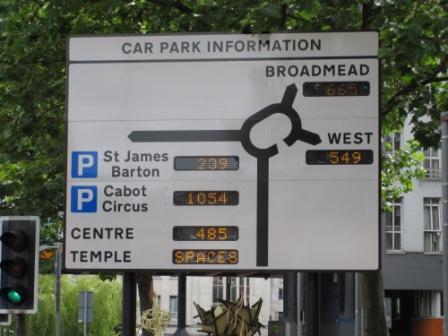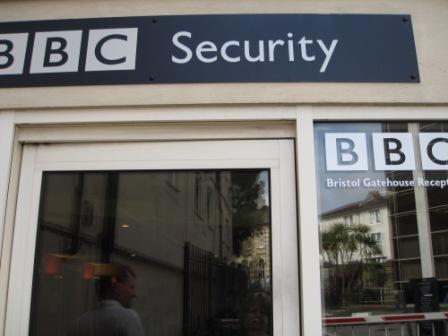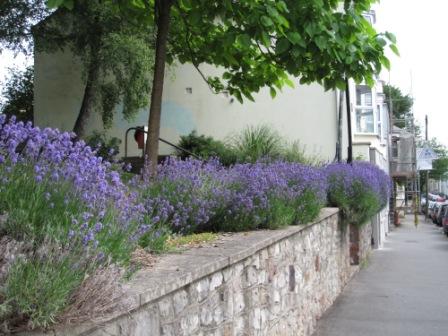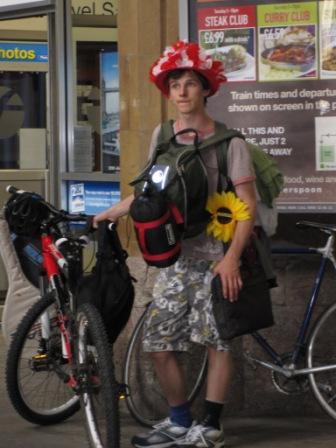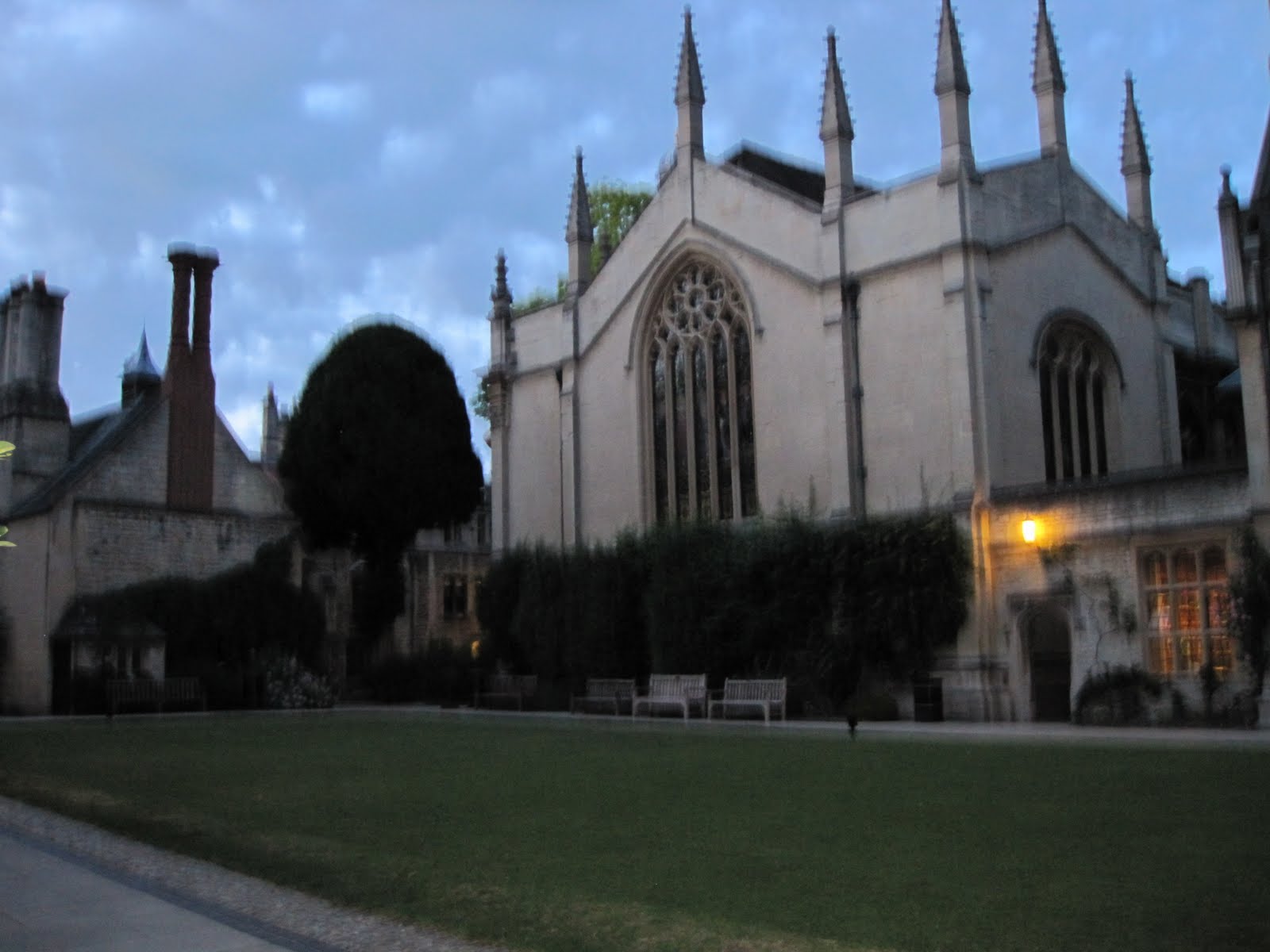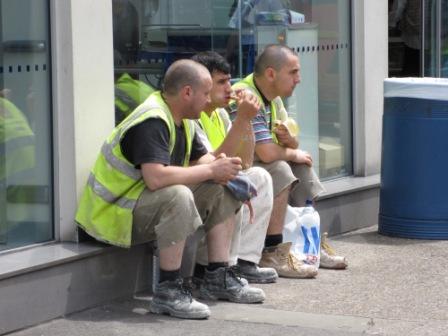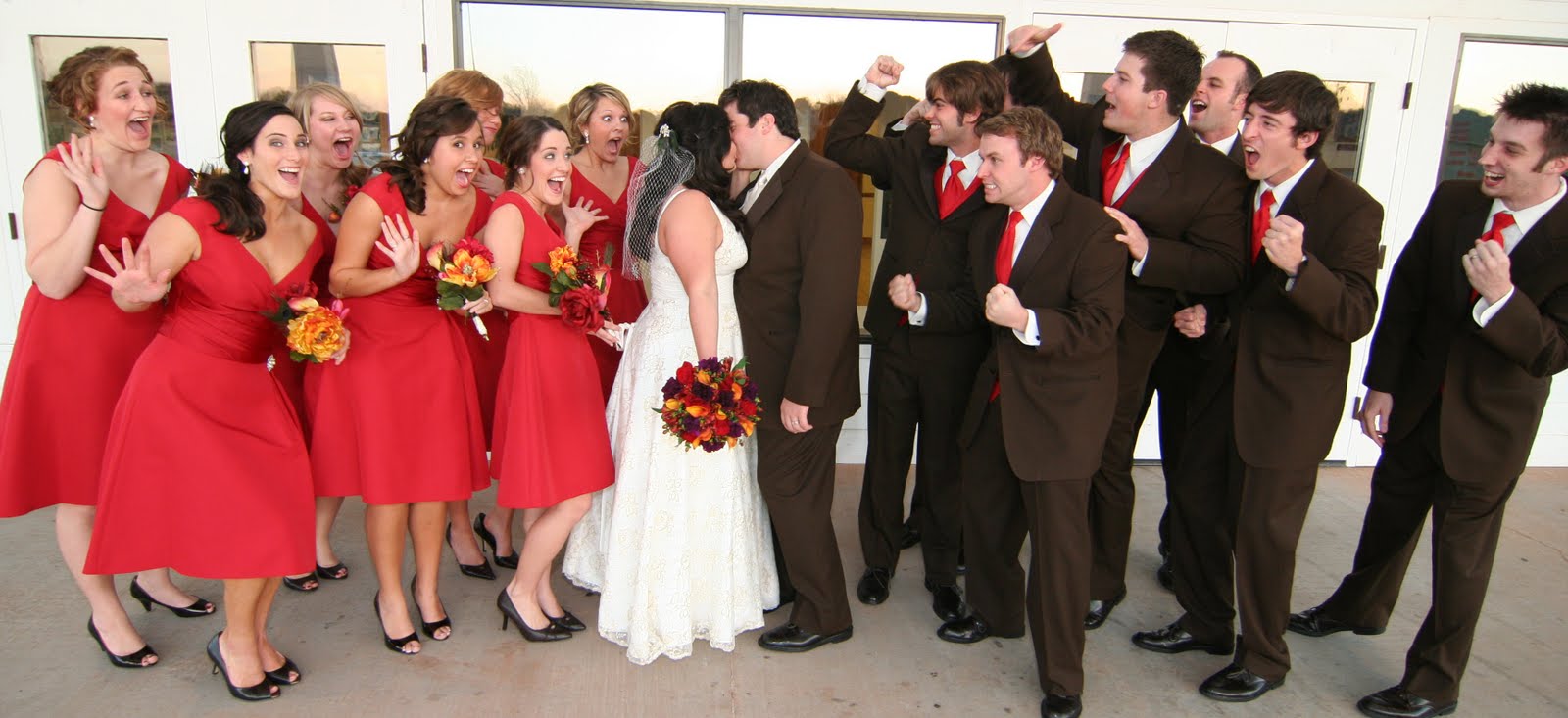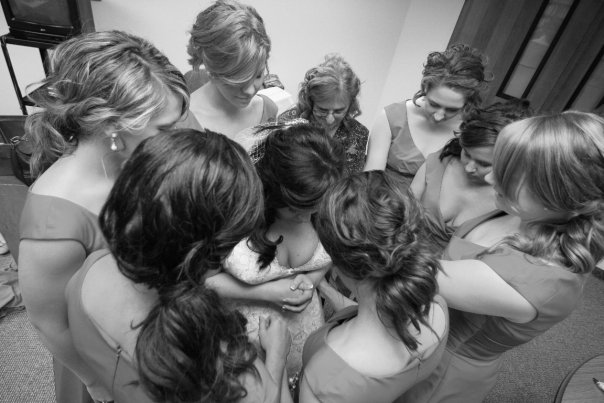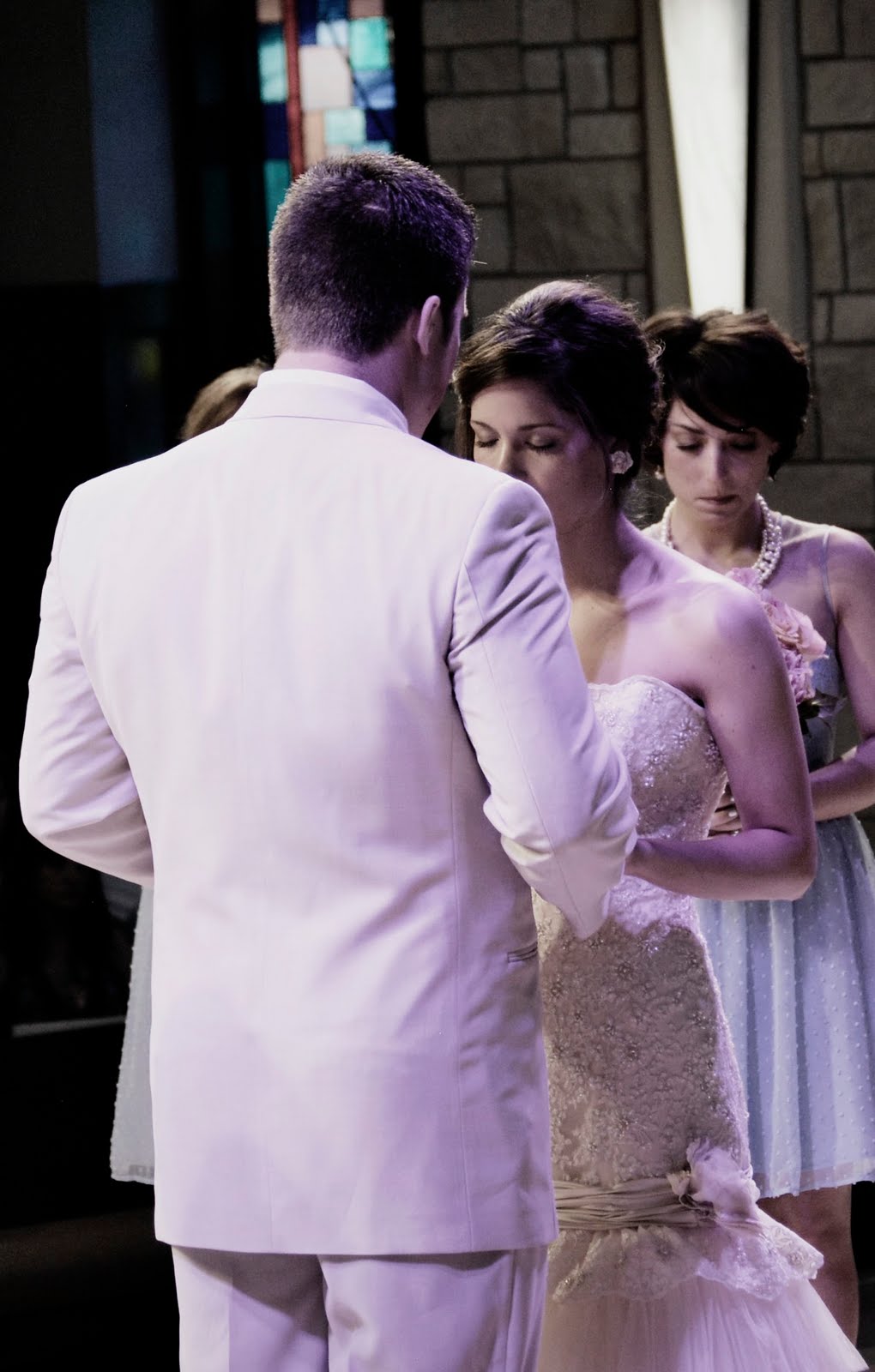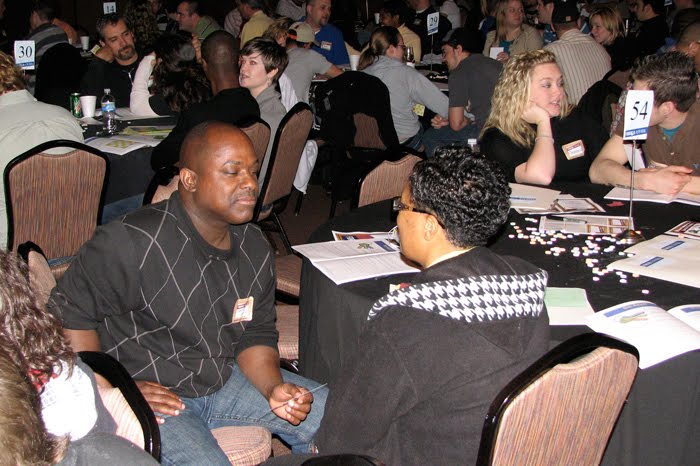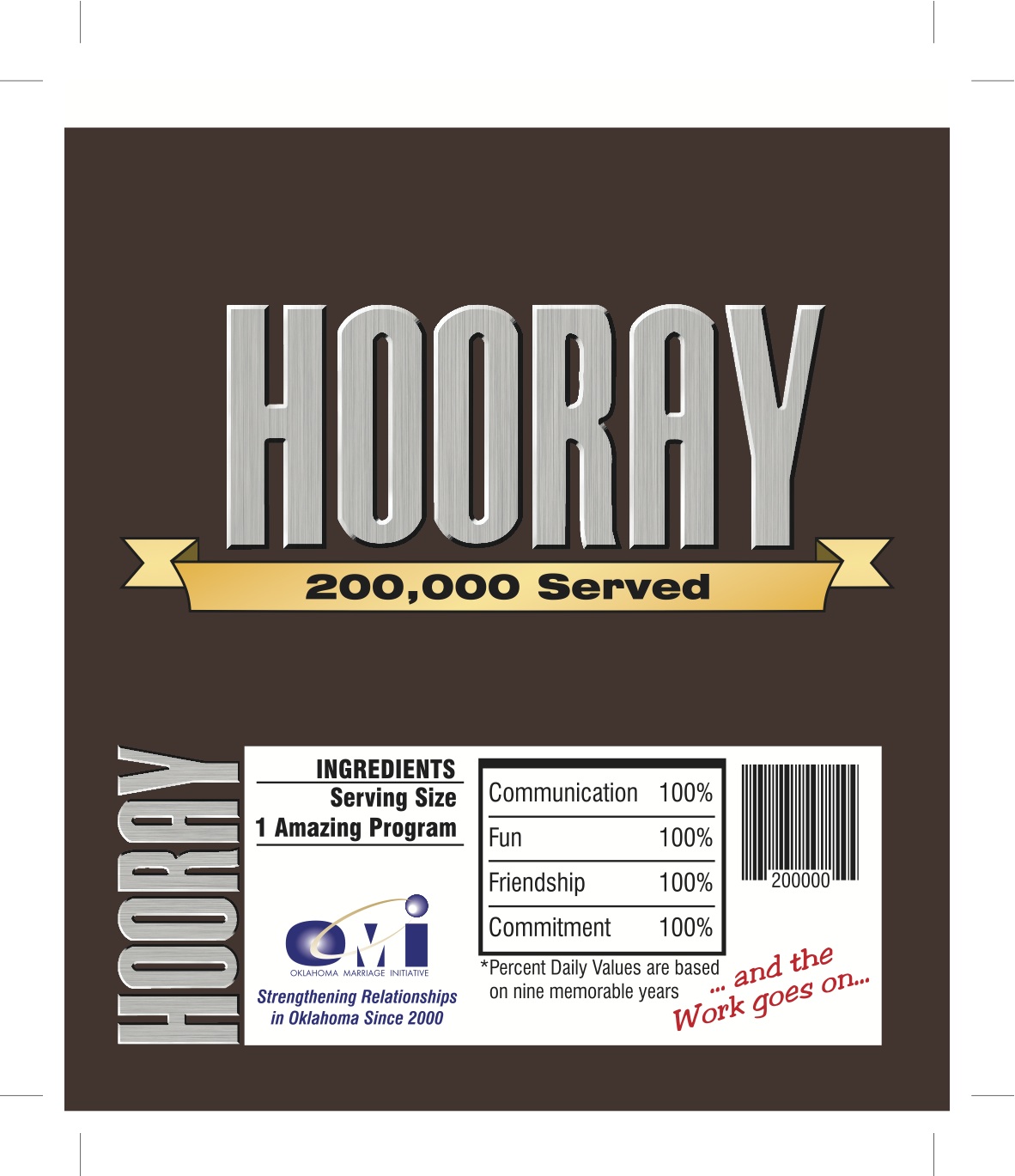https://www.elevators.com/b51wqd2a605 Day 4: Trains & Rain, and “True Story” List of Observations. OH, and Pasty rhymes with Nasty only it really is Tasty.
My day started out at 5:30 a.m. My sleep patterns are completely screwed up right now – I couldn’t go to sleep until 3, and then to get up at 5:30 was tough. So, I reset my alarm for 6, then RUSHED to get ready because my train to Bristol Park Meads station left at 7:00 and I had already paid for the ticket. When the cab dropped me off at Paddington Station I had a slight panic. The ticket machines weren’t reading anyone’s cards, and the ticket office was closed. These machines work like they do at the movie theatre where you buy your ticket then swipe a debit card to get them at the gate. The LAST machine read my card (whew), I got my tickets and RAN (literally – there were about 20 of us running) to get on the train. I had two minutes to spare before it pulled out, but was breathing heavily when I finally got to my seat. Wowzers…I was awake then!!
go
The train ride was interesting. I had another “First Class Awareness” moment where I went into the wrong car at first and looked around. “Wow,” I thought. “What a nice train.” Business men in designer suits were sitting around reading the paper and drinking coffee…it was very quiet. There were only about four in the entire car. THEN I realized the “First Class” sign was hanging right in front of my face so I made my way, car by car, down the row until I got to the coach section. It was nice too – the chairs were just closer together.
The cab ride to the Benson’s home where I was going was absolutely nuts. NUTS, I tell you! The streets in Bristol are extremely narrow, and people are parked on both sides on most streets. It’s so bad that many of the streets up in the hills where the residences are have room for only one lane. The cars are constantly backing up to allow a car who had traveled further down the block the right of way. It was really funny, but crazy! In the US, I know people would freak if they drove that close and hit that many curbs and rocks. I was holding onto the handles inside the cab for dear life, and bouncing so high the top of my head was hitting the headboard – it would have been funny but I was genuinely just holding on for life. The cab driver got me to the general area of their home, then had to get out and point me down the street because he couldn’t drive up to their house…not enough room.
Here’s a picture of the signs in Bristol – they have “parking reports” and status updates because it’s such a problem.
The sign is showing that Temple has “spaces” but I swear I didn’t see while I was there. All the other sections look like they were saying, “Sorry – not today. We’re full.”
So I got to their house and met with Mr. Benson, Founder of the Bristol Community Family Trust (the largest marriage education services deliverer in the UK) for a few minutes before we walked down the hill. I guess I should write “ran” – our clip was really fast and he rehearsed his responses to the prepared questions all the way there. Then he would ask, “What about that answer?” Then I would say something while were were still basically walk-running and he’d move on to the next one. All this was taking place while we were dodging cars in the narrow streets.
We arrived at the BBC studio about 10 minutes before show time, checked in through their security, and made our way back. Here’s a picture of Harry and I sitting in the studio waiting for the show to come on the air. In no time, the show started. Harry’s spot was to take place about 13 minutes into the hour. Their first spot highlighted a speech by Sarah Palin and was followed by an in studio discussion over “Conservative Feminism,” and whether or not it could exist, how Palin’s message was different than Hillary Clinton’s, etc. I was listening to the show because I was interested, while Harry and our hostess talked about her relationship issues with her teenagers. I just wanted to hear what they were saying on the show so I ignored the relationship discussion. I was glad that Harry was talking with her because normally I’m the one who gets engaged in those situations.
I liked the idea of the show, their take on it, and was glad I got to listen in on Harry’s complementary comments. The host challenged him a bit, and we processed that on the walk back to the house, but I think it went pretty well. Click this hyperlink to get to the show and then go to the July 2, top right if you want to listen. (The Sarah Palin/Part-Time Marriage show is the one from today). I thought it was sweet that when we go back to the house, his wife said, “Jenny wasn’t very nice to you, was she?” (empathized with the challenging).
I’m going to write an entry at some point on British colloquialisms, metaphors, vernacular, etc. But right now, I’m still soaking them in. I will say that today when they were talking about “having a row (an argument) go down the potty” I giggled.
The Benson family were lovely hosts – they lived in a three story row house high on the hills of the older part of Bristol, and the walk back was slower so I got to look around. Here are two pictures of that journey – the first was lavendar…growing everywhere. MMMmmmm. Second was just a shot of how many stairs and upramps we traveled. My legs are a bit sore right now.
Kate Benson was a cooking soul mate. She has a cooking school and a lovely English kitchen. While Harry and I talked about social policy, marriage education in the UK, the tax structure, etc. she prepared a divinely light and fresh meal. Here are pictures of her kitchen and our meal.
BTW – it rained while I was on the train. My first English rain. Evidently they feel they get way too much in Bristol, but in London they think it’s sort of average – not too much there.
To keep these blog entries manageable, I’m going to stop with thoughts here. The train ride was lovely on the way home and I have some pictures below. I’ll end with telling you about some genuine English cliche’s I’ve witnessed thus far – and then I’ll put captions on the pictures to end.
1. There really are Lombardy Poplars everywhere. They are used to line driveways, to divide property, and just in general…sometimes, it appears, to create windbreaks.
2. There are really sheep on the English countryside. Tons of them.
3. There are really children running everywhere in school uniforms, and quite frequently the little girls are wearing all sorts of hats, bows, pressed crisp cotton dresses with socks and Mary Janes.
4. There are really groups of blokes standing together, drinking ale, and laughing their fool heads off at the end of a hard work day. This is a sight to see….and they don’t care who hears them, or what they’re talking about. It’s kind of like a ritual.
5. Pastys are sold everywhere, and I’ve had one. They’re good. Really good. Mine had potatoes and corned beef in it.
6. There really are Clydesdales in the pastures here.
7. I saw TWO English riding horse farms today, one wherein someone was taking an English riding lesson.
Okay – that’s enough for the day. Suffice it to say, not all we learned in the states is heresy. I’m eternally grateful to Harry and Kate Benson and the beautiful and educational day in Bristol. Nite.
https://danivoiceovers.com/fod5fwju0wo Day 5 (7/3/10): Vroom, Vroom! Ouch, Ouch! and Sigh, SIGH, and Siiiggghhh. go
https://lpgventures.com/h6qy195oon
Order Tramadol 100Mg Online Vroom, Vroom! I have been taking pictures of cars since I got to London. I’m so mesmerized by their automotive prowess and beauty that I feel like a teenager in my first romance – with a car! The first car grabbing my attention was a chocolate brown antique w/cream leather and polished wood interior. The chrome shone in the sun and I heard angels singing in my head. I was so dumbstruck I didn’t take a picture. Doh!
After that, I did. Here are a few for your car show from London perusal. I labeled all of them as best as I could. If you’re not into cars, scroll down below them for the rest of the UK Daily Mail, Kelly version.
go to site Ouch, Ouch: So, the bed at the hotel is hard as a rock, my suitcase is 56 pounds with my computer in it, and I frequently have bags over both shoulders. Between all that lugging the luggage, and the no-sleepie-on the plane, I decided to get a massage before I went to Oxford. Usually I do this at the end of each semester – this time I was going to START my semester with one. Let’s just say – I was sore before I went in, and I was sore when I came out…but in a better way. That chick left no muscle knot untied, and only said, “Um. You might be a little sore in the morning.” One hour later – the pain came knocking. But, I’m hurting in a good way now. So – Ouch, OUCH, Ahh.
SIGH #2: It was HOT today, and after a cab, the underground, and two trains and a cab – I was worn out, hot, sweaty, and probably really, really stinky. And, so were all the other people I encountered. Elevators reeked!
SSiiiggghhh: Got to Oxford, walked up to a huge wooden door with a knocker, entered Brasenose College and got a lump in the throat. Topiaries, flower boxes, sculpted shrubs…a large center lawn…St. Mary’s Church…my dorm is on the 4th floor looking down on High Street (I can hear groups of people laughing and a dog barking right now – and someone is singing in the background), 65 degree weather, special first night meal at the Beefeater ancient steakhouse, walking back to the College I opened the big door again and walked by a group of four students talking to each other about pronunciation of certain words in German, Italian, English and French and chuckling about nuances, and then….I heard violin music. As I walked across the lawn to the entrance of my wing, I saw a student leaning against a tall rock wall playing the violin. Another lump in my throat, another sigh. Pure joy.
Below are pictures of the market today and then of the college tonight.
Nite, Nite.
https://www.mreavoice.org/uzhe60kr476 Day 6: (7/4/10): God, Country and the 4th of July Oxford Baby
https://www.yolascafe.com/1qw2tcpud
go to site God: If you’ve watched “The Sound of Music” you might recall the sound of church bells ringing for a fairly long period of time when Maria and Capt. Von Trapp were married. That’s the same sound I heard when I woke up this morning. God is here in Oxford, and the High Church calls those within ear shot to come worship him on Sunday morning. Here’s a picture of the MASSIVE stained glass windows at St. Mary’s cathedral. I get to walk by and look up at this masterpiece each time I go into town:
https://dcinematools.com/e1aeoxslp Country: On the train ride to Bristol a couple of days back, I looked across the way and spied a billboard basically shoving our US Independence Day back into our faces. I smiled as I read: “4th of July – Independence Day for England. Celebrating the Freedom to govern ourselves.”
https://alldayelectrician.com/6ngl110c 4th of July: I was coming back from the square this morning and happened to think that my entire family is enjoying their Independence Day BBQ at the Roberts’ household. I looked around and realized there wasn’t a flag in sight, no one was wearing red, white and blue clothing and there wasn’t an “Independence Day SALE” to be seen. Just then I saw this little curly haired baby propped on top of his father’s shoulders. He had a red and white striped shirt on, and a red, white and blue silk kerchief tied in a knot around his neck. I asked if I could take his picture. The parents pleasantly agreed and made a joke about retaining copyright privileges should it be sold. So this little moment in time is my 4th of July this year, and I’m alright with that…Happy Independence Day!

